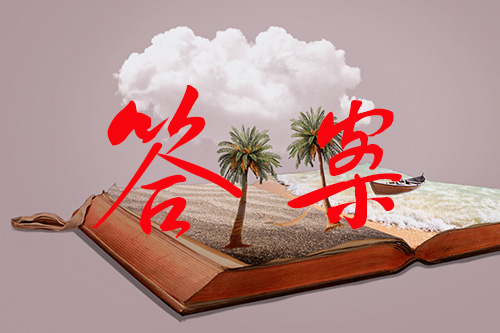炎德英才大联考湖南师大附中2025届高三月考试卷(一)英语试卷答案,我们目前收集并整理关于炎德英才大联考湖南师大附中2025届高三月考试卷(一)英语得系列试题及其答案,更多试题答案请关注本网站

炎德英才大联考湖南师大附中2025届高三月考试卷(一)英语试卷答案
以下是该试卷的部分内容或者是答案亦或者啥也没有,更多试题答案请关注本网站
34. What does paragraph 4 mainly talk about?A. The role of practice. B.Factors in creating experts.C.The importance of natural talent.D.Warnings for experts.

0.WWhat does the underlined word“tracing”in paragraph 4 mean?A. Improving. B.Following. C.Attracting. D.Protecting.
Helen: Yes, I have. I have been there three times. It's an amusement park with a special theme —— Disney characters and movies.
Bob: 68
Helen: Well, we stayed there for 3 days. There are many exciting rides, lovely restaurants and fantastic gift shops there.
Bob: That sounds great. 69 . I can't wait to go there.
Helen: You can do that. I hope you can have a good time.
Bob:Thank you.
答案:66.
Chinese dragons are most like snakes, and have four claws and no wings. They often have features of other animals, including carp, tigers, and eagles. However, Western dragons look like huge lizards(蜥蜴) with big claws and large bat-like wings, and are often shown with spines or rough(粗糙的) scales.
In traditional Chinese culture, a dragon is a symbol of luck, power and high position. They can cause weather changes and bring rainfall to the fields to ensure rich harvests. They are considered divine(神圣的) creatures, which hold an important position as the head of the four spirits. Therefore, to symbolize their power, ancient Chinese emperors decorated their clothes with dragon patterns. These clothes are known as dragon robes. Many Chinese view the dragon as a national symbol, proudly referring to themselves as “descendants(后代) of the dragon”. In the west, however, a dragon symbolizes an evil(邪恶的) creature that spreads violence(暴力) and terror throughout the land. They are believed to be transformed by the devil, with the ability to breathe fire or spit poison. Many Western tales show dragons being defeated and killed to protect people from danger.
Today, dragons continue to develop, beating traditional boundaries and finding new significance in global culture. They are no longer connected with evil or good, but rather as complex(复杂的) characters with their own special personalities. For example, Toothless from How to Train Your Dragon begins as a dangerous dragon but turns into a misunderstood being with love. This challenges the idea of dragons as naturally evil, presenting them as complex beings with emotions.
28. What do Western dragons and Eastern dragons have in common
A. They have rough skin. B. They are huge and powerful.
C. They are in the shape of snakes. D. They have big claws and wings.
29. What do we know from Paragraph 3

28.How do you find the Highsmith family from the age-progression photos?A.They are kind and intelligent. B.They are diligent and generous.C.They are determined and innovative.D.They are hardworking and devoted.

